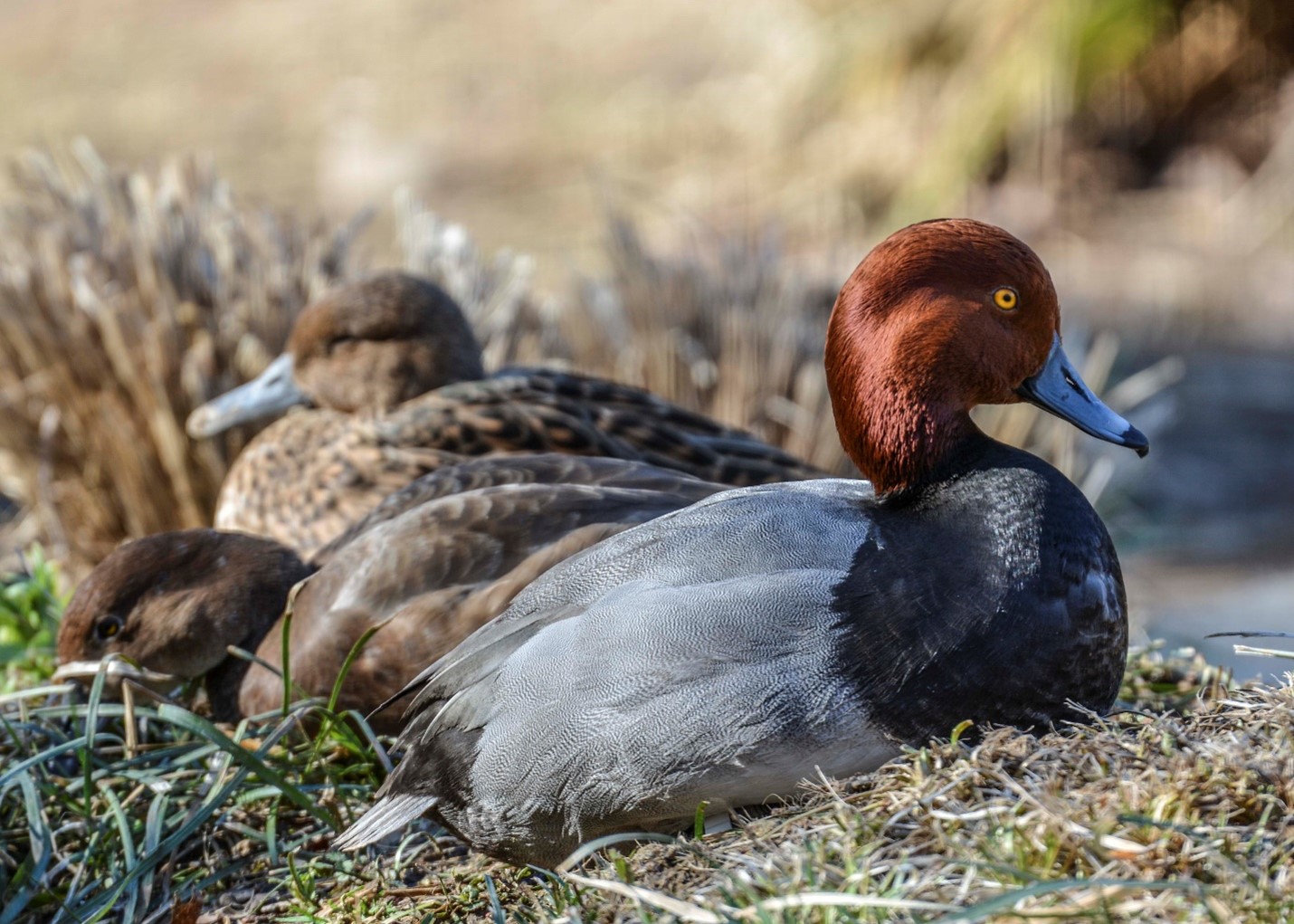Redhead
Aythya americana
BASIC DESCRIPTION
The redhead duck is a medium-sized waterbird. During breeding season, the male is resplendent with a cinnamon-colored head, gray and black vermiculation across the back, black chest and tail, and a yellow eye. His bill is blue with a black tip. The forehead of this duck is steep, forming almost a 90-degree angle with the bill. This is important in separating them from male canvasback ducks which are similar. The female and juveniles are very plain brown/gray with a dark eye gray bill with black tip.
Behavior and Habitat
Redheads are one of the most gregarious of ducks and are sometimes referred to as rafting ducks for the large groups they form on the water. They often feed with other species of ducks as well.
the large groups they form on the water. They often feed with other species of ducks as well.
The redhead female builds the nest and is fairly opportunistic about the location she chooses. She may nest on canals, farm ponds, sewage ponds, marshes, or near open water and even on top of muskrat houses if water levels are high. She constructs a tightly woven nest of grasses and reeds in tick cover where she will have a brood of 7-8 eggs.
Despite the fact that she creates her own brood, redhead females are also great nest parasites, laying eggs in other redhead nests as well as other ducks such as mallards and canvasbacks.
Redheads are diving ducks, with feet placed far back on the body to help them swim underwater. They feed on a wide variety of plants as well as invertebrates and fish eggs. Although classed as divers, they are commonly seen “dabbling” or tipping up to eat food just under the surface.
The oldest redhead on record lived over 20 years before being harvested.
Similar Species
The female redhead is very plain and may be difficult to distinguish from other female ducks. Look for the black-tipped bill. The male redhead and the male canvasback look similar, but again, the bill is different and the forehead shape is also distinctive. With the redhead, it is steep while with the canvasback it slopes in an unbroken line onto the bill.
When and where found at Camas NWR
Look for redheads on open water in any ponds that still have water this time of year.
Conservation
“Overall, Redhead populations were stable between 1966 and 2015, according to the North American Breeding Bird Survey. Though some areas had increased numbers during that time, significant declines were noted in the Great Basin, where populations declined by 87%, and in Idaho, where populations fell by 99%. The U.S. Fish and Wildlife Service estimated a North American population of 1.2 million in 2015. This number is up 76% from mid-twentieth-century averages. The species rates a 10 out of 20 on the Continental Concern Score. Redhead is not on the 2016 State of North America's Birds' Watch List. Carefully managed hunting seasons combined with work to restore duck habitat have helped many duck populations increase from lows in the mid-twentieth century. Redheads’ gregarious nature and attraction to decoys make them a popular target of hunters, with estimated harvests of just over 300,000 birds per year in 2013 and 2014. Wetland restoration in the Prairie Pothole Region and at Gulf of Mexico wintering sites through the North American Waterfowl Management Plan are benefiting Redheads, which have lost breeding habitat to wetland drainage in the Midwest and Canada and to degradation of breeding sites in Chesapeake Bay. Limited water in the Great Basin and drought throughout the West also jeopardize breeding habitat. Other threats include disturbance by boaters at nesting and wintering sites, and collisions with power lines and buildings..” www.allaboutbirds.org/guide/redhead/lifehistory
Text and photo by Terry Thomas. Source: https://www.allaboutbirds.org